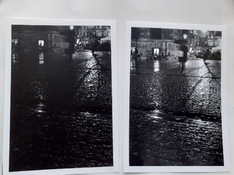Pieter12
Member
Occasionally, I will use a graduated filter to darken the sky above the horizon, either an ND grad for color (and black and white) or a yellow-orange grad to darken the sky a bit while bringing out the clouds if there are any.One of the hardest lessons I had to learn (took many years in fact) was to not let my expectations regarding weather or subject matter ruin a day of photographing.
There were so many times where I'd want sunshine and it would rain, or I'd want fresh snow on the trees and it would drop off first thing in the morning. One of my best photographs was taken on a day I didn't want to go because of forest fire smoke. My reward for forcing myself out the door that day is a forest image which everyone misinterprets as being taken on a foggy day...hey...who am I to tell them what to think!??!
Congratulations are on order for your determination; it'll lead you to many unforeseen discoveries









